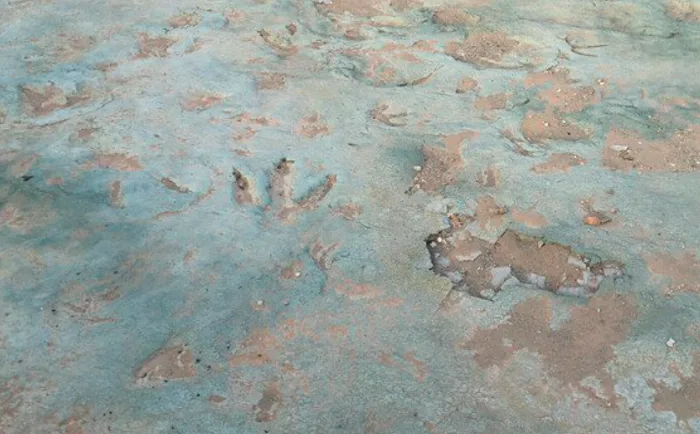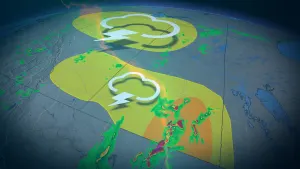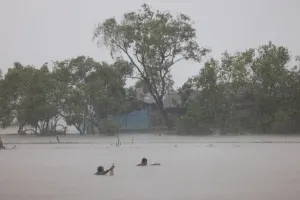
112-million-year-old dino prints feared damaged by construction
An investigation is underway.

Photo of Mill Canyon Dinosaur Tracksite. Photo credit: (U.S. Bureau of Land Management)
Government-funded equipment used to remove a wooden boardwalk at Utah's Mill Canyon Dinosaur Tracksite located near Moab may have damaged footprints dating back to the Cretaceous period.
State Bureau of Land Management (BLM) officials say the boardwalk was put in place to protect the 112-million-year-old prints and denies its backhoe altered the tracks.
According to people who visited the site in late January, vehicle treads can be seen on top of several prints.
In October 2021, the BLM filed a public proposal stating the boardwalk was beginning to warp, making it a "trip hazard."
It suggested replacing the wooden walkway with one made out of concrete, adding that the risk of damage would be mitigated by marking and outlining sensitive areas Deseret News reports.
But according to witnesses, a backhoe was used to dismantle the wooden structure and the discarded sections were piled beside the dinosaur prints within the protected area.
“This was a bureaucratic screw-up,” Jim Kirkland, a state paleontologist for the Utah Geological Survey who surveyed the site after the backhoe has begun its work, told Science.
He told the publication he's upset paleontologists weren't consulted for the project.
“They [BLM] didn’t talk to any of us,” Kirkland said.
“I had no clue.”
Kirkland told Deseret News the price tag on the walkway project is about a quarter of a million dollars, adding that had he been consulted, he would have suggested putting up a shelter to protect the tracks from the elements and the machinery.
LOCATOR MAP: MILL CANYON DINOSAUR TRACKSITE
CEASE AND DESIST
On January 30, the Center for Biological Diversity sent a cease-and-desist letter to BLM officials, urging the agency to "immediately halt the destruction of irreplaceable paleontological resources at the Mill Canyon Dinosaur Tracksite near Moab."
"Over the weekend reports emerged on social media that a BLM project to replace the boardwalk at Mill Canyon Dinosaur Tracksite had gone awry," reads an excerpt from the January 30 letter.
"A backhoe had driven over and destroyed as much as 30 per cent of the paleontological resources at the site, according to the reports."
Speaking with Science on February 1, Kirkland said the extent of the damage isn't clear and likely concentrated to the perimeter of the protected area.
The footprints at the Mill Canyon Dinosaur Tracksite were discovered in 2009. In 2013, officials built a raised wooden boardwalk, allowing visitors to observe the irreplaceable prints without damaging them.
Thousands of people visit the site annually, alongside countless experts.
The area contains more than 200 dinosaur tracks from 10 separate species that are embedded into sedimentary rock - including tracks from ancient crocodiles and swimming dinosaurs, as the locale was once a lake.
“I’m absolutely outraged that the BLM has apparently destroyed one of the world’s most important paleontological resources,” Patrick Donnelly, Great Basin director at the Center for Biological Diversity, said in a statement.
“This careless disregard for these irreplaceable traces of the past is appalling. It really calls into question the Bureau’s competence as a land-management agency.”
Following the cease and desist and public outcry, officials have halted construction and launched an investigation.
"The Moab Field Office is working to improve safe public access with an updated boardwalk that is designed to protect the natural resources of this site," BLM said in a statement.
"During that effort, heavy equipment is on location, but it is absolutely not used in the protected area."










